TV vs Projector: Which is best for a home cinema?
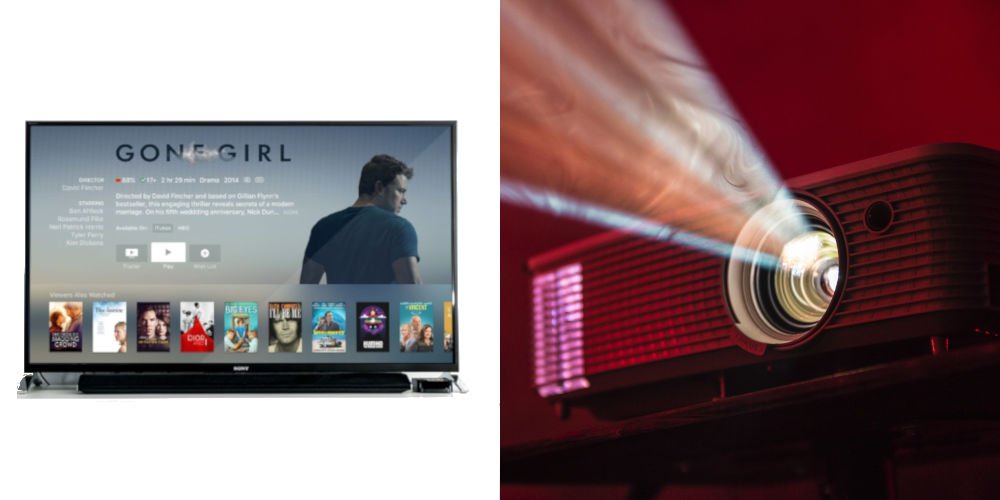
People have been arguing over the TV vs Projector debate for decades. You still have the diehard home cinema enthusiasts who wouldn’t swap their projector for a television if you paid them. Others made the switch years ago and are happy with their choice.
We live in an age where more large format TVs are available than ever before. So, you might think projectors are increasingly obsolete, especially in a home cinema room. However, they still have their place and use, hence the need to compare them.
Over the last 15 years, TVs have evolved from bulky CRT units to paper-thin LED devices. We’ve also seen the creation of High definition formats such as 4k and 8k. And that’s without mentioning the explosion of on-demand streaming.
Projectors, on the other hand, are affordable and use the latest technology. Many offer a superb level of brightness, large screen sizes over a short distance, and multiple picture resolutions.
Choosing between a TV vs Projector on aesthetics alone is like having a paddle but no boat! So we must consider features, functions, and use rather than solely the design. If you’re stuck making a decision when building a home cinema, this article will guide you.
Ease of installation
Before we get into the technical debate between TV vs projector, it’s worth looking at the basics, and installation tops the list.
In terms of ease of installation, setting up a new TV usually takes minutes. There’s no need to run multiple cables or calibrate it to work within a wider system. Plus, mounting a TV on a wall takes minutes.
However, TVs are more fragile than projectors and aren’t as easily moved. Moving your projector to a friend’s house to enjoy football on a large screen with a group of mates is painlessly easy. Try it with a TV, and you might damage your television on the way.
Projectors require far more work to set up. You’ll need to build and mount the screen. Next, calibrate the projector for the best possible image size and quality. Finally, you’ll need to mount the projector and secure the cables.
You can make setting it up easier by using an AV receiver to manage multiple inputs, such as a Blu-ray player and gaming consoles, while also powering the speakers. The AV receiver does the heavy lifting and feeds the projector with a single HDMI cable.
Of course, using an AV receiver and speakers on top of the projector and screen adds further complexities to setting up your home cinema. However, we’d argue that adding these pieces creates a much better viewing experience.
Installation winner: TV
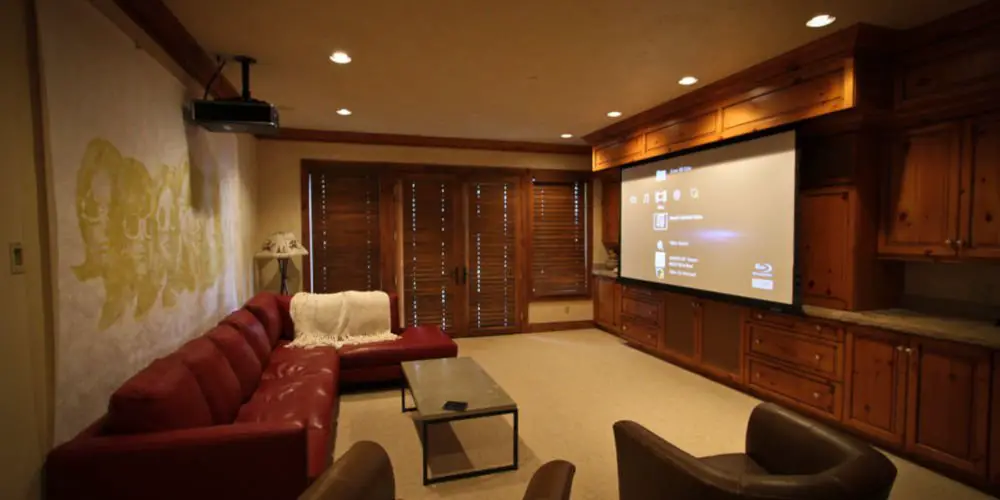
Sound quality
Most affordable projectors have built-in speakers. That said as the projector is typically mounted behind the viewers, the sound quality is less than ideal.
TVs, of course, have built-in speakers yet most suffer from two design issues. As TVs have super-sized, they’ve become paper-thin, meaning speakers have less room to push air. Many end up sounding tinny and thin.
Another design flaw inherent in modern TV is the speakers are placed at the rear. They project sound onto a wall which then bounces into the room making the audio sound muffled.
With the odd exception, neither particularly excels at offering exceptional sound quality. It’s the reason why many have invested in Soundbars as they improve the TV viewing experience.
Of course, if you’re building a serious home cinema, you’ll need an AV receiver to manage and distribute audio and video. The receiver splits the audio and sends it to the speakers. This system offers far superior audio than a TV or soundbar.
Sound winner: TV*
* on a technicality, a projector with the right speaker set-up will easily perform better.
Ease of use
Putting installation to one side. Projectors require marginally more work. With a TV, turn it on and you’re ready to go. Projectors require new bulbs every few years.
Smart TVs offer multiple extras that a projector simply can’t. For example, smart televisions connect to the internet, making accessing on-demand services like YouTube and Netflix very simple. Many offer voice control and integrate with home automation systems.
Many projectors offer USB ports allowing you to use an Amazon Fire TV stick or Chromecast and enjoy on-demand streaming services. Again you’ll need additional kit to integrate a projector into a home automation system.
Projectors handle 3D movies better than TV. As more films become available in this format, you might find a projector is a worthwhile investment.
Ease of use winner: TV
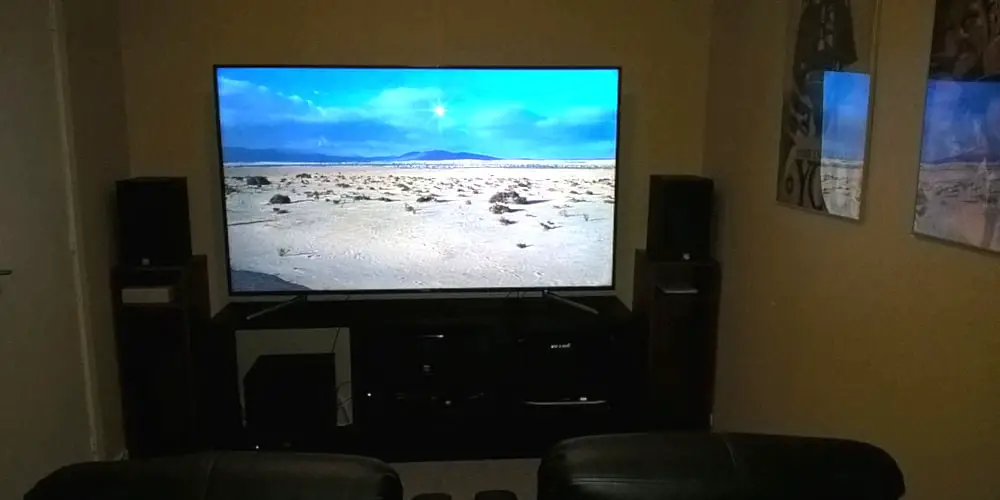
Space requirement
On the surface, neither take up a lot of physical space. Even in a small room, you don’t need a large distance between the viewer and the TV. However, projectors need much more distance between their lens and the screen.
Using a projector in a small room can result in a less than ideal viewing experience as the viewer is required to sit close to the screen. Images can appear distorted, and it’s easy to miss important details.
Space winner: TV
Screen size
Contrary to popular opinion, size does matter. Well, screen size does when it comes to TV vs projector!
While a handful of 100 inches plus flat-screen TV available on the market, they’re prohibitively expensive (for example, Hisense H100LDAUK is yours for £10,999!). In fact, you could hire a firm to build a fantastic home cinema for that budget!
Even the more widely available 80 inches plus TVs can easily cost £2,000. A prime example is the Samsung 82-inch RU8000.
Many projectors easily reproduce a picture between 30 and 300 inches. All projectors in our list of the best units under £500 beat TVs on image size without trying.
Some movies are filmed in a different aspect ratio to Television shows. So, using a TV to watch certain films might not provide the best results.
A television might crop images or introduce black lines at the top and bottom of the image (known as ‘letter boxing’) to show the full width of the image at the widescreen 2.35:1 ratio.
Screen size winner: Projector
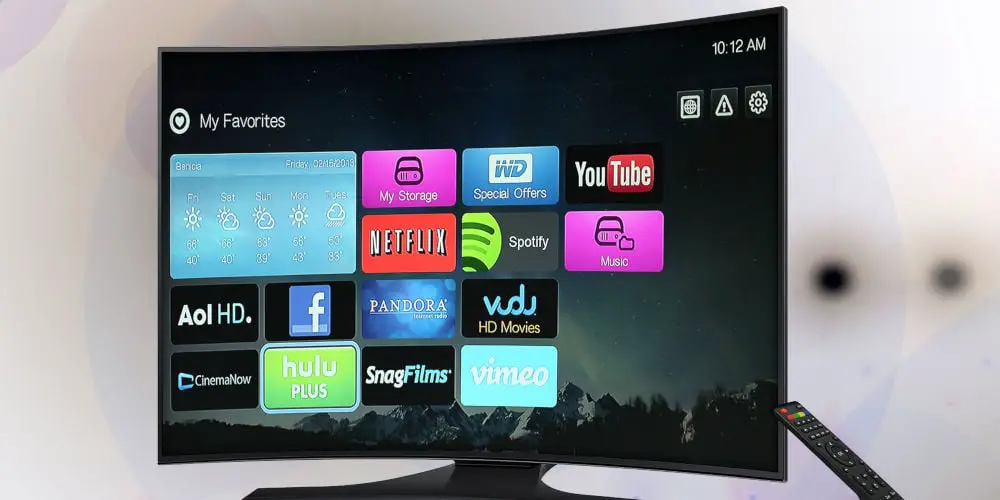
Brightness
As they work differently, brightness is a key consideration with projectors. Sunlight may render a projected image unwatchable yet only have a small impact on the picture displayed by a TV.
It’s why most cheap projectors only perform adequately in a completely dark room. Introduce a hint of sunlight, and the picture quality degrades quickly. So, it’s best to look for projectors with a brightness of at least 2,500 lumens.
LED Televisions, by comparison, produce a significantly brighter image. Try reducing the TV’s brightness, and the picture quickly becomes muddier. You’re more likely to suffer from eye strain with a TV.
What makes comparing the brightness between a TV vs projector is that they use different measurements. Lumens are used for Projectors, whereas a television’s brightness is measured in nits.
Another factor to consider is brightness over the device’s lifespan. A lamp in a projector will dim over time, producing fewer lumens in output. TVs don’t suffer from this issue. After years of use, they are just as bright.
Another factor to consider is projectors have natural compression, making them easier on the eyes.
Brightness winner: Projector
Contrast
While projectors are capable of very high contrast ratios, it’s also a function of brightness. Unless you’re in a completely dark room, a projector is likely to wash out, ruining the contrast.
TVs are bright enough to compete with a lighter environment. OLED TVs, for example, essentially offer an infinite contrast ratio because of how the technology works.
If contrast matters or you don’t fancy watching in a completely dark room, then TVs are the better option.
Contrast winner: TV
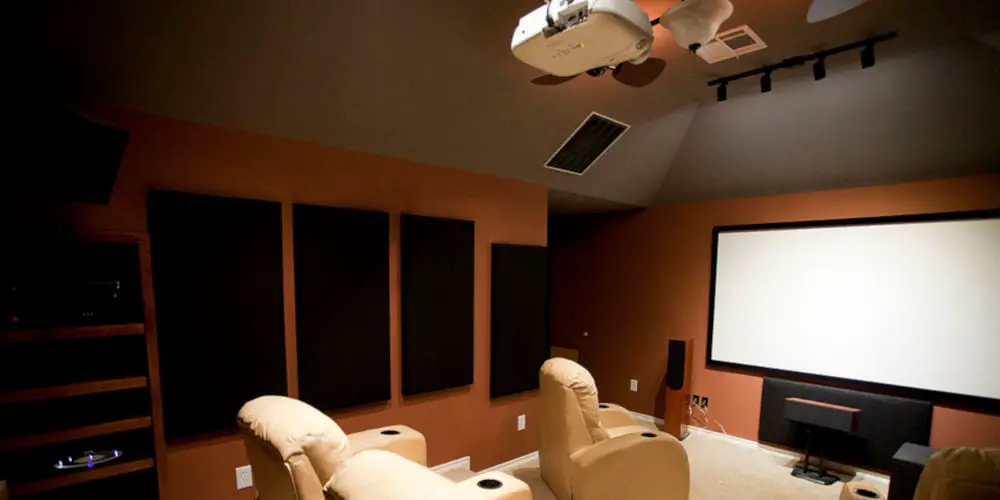
Resolution
If you’re obsessed with getting the highest possible resolution, TVs will win, easily. Buying a 4k HDR (high dynamic range) TV is far more affordable than a projector.
Try to find an 8k projector, and you’ll struggle. If you get lucky, you’ll quickly realise they cost the same as a family car. 8k TVs will look comparably cheap and are more available, yet they are still expensive.
As more films become available in 3D, it’s worth mentioning that TVs lag behind projectors in reproducing this format. Many Blu-ray players, including several affordable models, are 3D-ready. So in this regard, consider investing in 3d ready projector and Blu-ray player.
Resolution winner: TV
Colour accuracy
Even cheaper projectors (DLP, 3-chip LCD, or LCOS) offer a fantastic range of colour hues. You shouldn’t need to compromise on depth or richness of colour.
TVs require more and better processing to produce a wider colour pallet, increasing the unit’s price. An HDR TV may cost the same as an HD projector, just they come without the maintenance or set up issues.
Colour winner: Draw
Home Cinema: TV vs Projector
So which TV vs projector is better for a home cinema room?
Looking at price and ease of set-up, then TVs win. However, projectors perform better for watching movies. Plus, you can use a projector for everyday TV watching.
If you’re planning a snug or media room, you might want to invest in a TV with a soundbar and subwoofer. This minimal set up will produce fantastic results for regular watching TV.
However, if you’re building a home cinema for watching movies, sports, and playing console games, a projector will be your best option. You’ll soon forget about the hours you spent setting the system up as the experience is far superior to what a TV can offer.
However you decide between TV vs projector, you now better understand the pros and cons of each type of display.




